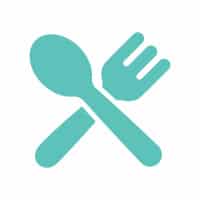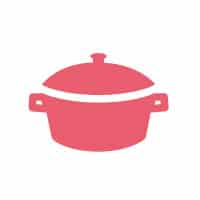Liquid meals only? Your doctor just changed your entire eating routine, and you’re wondering how to make it work.
Following a full liquid diet can feel overwhelming when you’re unsure which foods are allowed or how to stay satisfied.
Many people struggle with hunger, confusion about food texture, and concerns about meeting their nutritional needs during the recovery process.
This guide will show you exactly how to follow a full liquid diet safely while maintaining proper nutrition and managing hunger effectively.
You’ll learn the difference between liquid diet types, see which foods are permitted, get practical satisfaction tips, follow a complete sample menu, understand safety considerations, and know when to transition back to solid foods under medical supervision.
What Is a Full Liquid Diet?
A full liquid diet includes foods and drinks that are liquid at room temperature or become liquid when they reach body temperature.
Think of it as a step up from clear liquids. You can have thicker, more nutritious options that still flow smoothly.
The key difference from clear liquid diets: While clear liquids only allow see-through beverages like water, clear broths, and plain tea, a full liquid diet permits opaque and thicker liquids that provide substantially more calories and nutrients.
Texture requirements: All foods must be smooth enough to pass through a straw without any solid pieces, chunks, or lumps. Nothing should require chewing.
Common examples include:
- Milk-based drinks and protein shakes
- Smooth yogurt and puddings
- Strained cream soups and broths
- Blended smoothies without pulp or seeds
- Ice cream and sherbet (without solid pieces)
- Nutritional supplement drinks
The main goal is getting proper nutrition while giving your digestive system the rest it needs, or helping you recover from medical procedures safely.
When and Why Is a Full Liquid Diet Recommended?
Doctors prescribe full liquid diets for specific medical reasons as temporary measures to support healing or prepare for procedures.

Three Main Medical Situations
Doctors prescribe full liquid diets for specific medical reasons as temporary measures to support healing or prepare for procedures.
1. Recovery After Surgery
- Oral surgery, dental procedures, and jaw operations
- Gastrointestinal surgeries requiring digestive rest
- Bariatric surgery patients transitioning from liquids to solids
2. Managing Medical Conditions
- Swallowing difficulties (dysphagia) – reduces choking risks
- Inflammatory conditions like severe gastritis or Crohn’s disease flare-ups
- Conditions requiring complete digestive tract rest while maintaining nutrition
3. Medical Procedure Preparation
- Pre-colonoscopy dietary restrictions
- Helps clear the system while providing more nutrition than fasting
- Better nutritional support compared to clear liquids alone
Critical Safety Point
Medical supervision required: Never start this eating plan without consulting your healthcare provider first. Improper or extended use causes serious nutritional deficiencies and health complications. Always follow professional guidance for duration and implementation.
Health Benefits of a Full Liquid Diet
When followed properly under medical guidance, a full liquid diet offers several important advantages for recovery and health management.

Gentle Nutrition Delivery
This eating approach provides essential hydration and nutrients while placing minimal stress on your digestive system.
Your body can absorb vitamins, minerals, protein, and calories without exerting much effort to break down solid foods. This is particularly helpful when your stomach, intestines, or mouth need time to heal.
Smooth Transition Support
Transitioning directly from no food intake or clear liquids to regular meals can be a shock to your system.
A full liquid diet serves as the perfect middle step, allowing your digestive tract to gradually readjust to processing nutrition again. This reduces nausea, cramping, and other uncomfortable symptoms.
Controlled Weight Management
Under medical supervision, some patients use full liquid diets for short-term weight loss or to give their system a reset.
The controlled calorie intake and improved portion awareness can support specific health goals when monitored by healthcare professionals.
Important reminder: These benefits only apply when the diet is used appropriately for medical reasons and for limited time periods. Long-term use without professional oversight can cause serious health problems.
What Can You Eat on a Full Liquid Diet?
Understanding exactly which foods and drinks are permitted helps you plan satisfying meals while staying within medical guidelines. Here is your complete food list, organized by category.
| Category | Key Foods & Tips |
|---|---|
| Nutritional Drinks & Beverages | Water, milk (dairy/plant-based), pulp-free fruit juices, electrolyte drinks, herbal teas, coffee, protein drinks, meal replacement shakes. |
| Protein and Dairy Options | Smooth yogurt (no fruit pieces), strained cream soups, eggnog, milk-based protein shakes, Greek yogurt thinned with milk, pureed soups (strained) |
| Sweet Treats and Desserts | Ice cream/sherbet (no chunks), smooth puddings, custards, gelatin, sorbet (avoid solid add-ins like cookies or fruit pieces) |
| Safe Addition Tips | Use food thickeners only when recommended, read nutrition labels carefully, use a high-quality blender for smooth textures, and consult a medical provider when uncertain. |
How Do You Satisfy Hunger on a Liquid Diet?
Staying satisfied on liquids requires smart planning and the right food choices. These proven strategies help you feel full and energized throughout the day.
- Choose Protein-Rich Liquids: Protein keeps you satisfied longer than simple liquids. Focus on protein shakes with 20 grams or more per serving, Greek yogurt smoothies diluted with milk, and egg-based drinks like eggnog for a complete amino acid profile.
- Eat Frequently and Sip Slowly: Plan 6-8 smaller portions throughout the day instead of three large liquid meals. Sip slowly to help your brain register fullness and prevent bloating, and set reminders every 2-3 hours.
- Focus on Nutrient-Dense Options: Choose calorie-rich, nutritious liquids that provide lasting satisfaction and energy. Blended soups with healthy fats, such as avocado, and cream-based soups offer more calories and sustained energy than lighter options.
- Fiber Alternatives for Fullness: Try smooth oat milk for gentle fiber or well-blended fruit purées without pulp. These options help you feel more satisfied while supporting digestive health within diet restrictions.
Sample Full Liquid Diet Menu (1-Day Plan)
Planning your daily meals helps ensure proper nutrition while meeting medical requirements. This sample menu offers a balanced diet across six eating occasions throughout the day.

| Eating Time | Menu |
|---|---|
| Breakfast (7:00 AM) | Greek Yogurt Smoothie: Blend 1 cup of plain Greek yogurt with ½ cup of milk and 1 tablespoon of honey. Strain if needed to remove any lumps. Pair with herbal tea for a warm and comforting experience. |
| Mid-Morning Snack (10:00 AM) | Protein drink: Mix 1 cup almond milk with 1 scoop vanilla protein powder. Serve with sugar-free gelatin for extra satisfaction. |
| Lunch (12:30 PM) | Strained potato soup: Blend cooked potatoes with warm broth until completely smooth, then strain the mixture through a fine-mesh strainer. Follow with a ready-made protein shake for added nutrition. |
| Afternoon Snack (3:00 PM) | Smooth applesauce (strained to remove any pulp) paired with vanilla custard for protein and calories. |
| Dinner (6:00 PM) | Cream of mushroom soup: Blend thoroughly and strain to ensure no solid pieces remain. Finish with eggnog for an extra boost of protein and richness. |
| Evening Snack (8:30 PM) | Warm milk with a hint of vanilla, paired with sugar-free pudding, for a satisfying end to your day. |
Daily totals: Approximately 1,200-1,400 calories with balanced protein, carbohydrates, and essential nutrients.
Risks and Considerations to Keep in Mind
While medically supervised liquid diets serve important purposes, understanding potential risks helps you stay safe and make informed decisions about your health.
Nutritional Deficiency Concerns: Full-liquid diets often lack fiber, leading to constipation and digestive issues. They may also miss essential vitamins and minerals like iron, B12, and fat-soluble vitamins without proper supplements.
Energy and Fatigue Issues: Many people experience low energy levels, especially during the first few days of treatment. Blood sugar fluctuations occur when liquid meals aren’t properly timed, causing weakness and concentration problems.
Medical Supervision is Essential: Never start or continue a full liquid diet without professional guidance from qualified healthcare providers. Self-prescribing this restrictive eating plan can cause serious health complications that require immediate medical attention.
Duration Matters: These diets are designed for short-term use only, typically lasting days to a few weeks at most. Extended periods require careful medical monitoring and specialized nutritional support.
Conclusion
A full liquid diet serves as a vital medical tool for recovery and the management of certain health conditions.
Understanding which foods are permitted and following proper portion timing makes all the difference in your success.
Always consult with your healthcare provider before starting any liquid diet plan and follow their specific guidance for your situation.
Have you tried a full liquid diet before? Share your experience or questions in the comments below. Your insights could help others facing similar dietary challenges.
With proper medical guidance and the right approach, you can successfully manage this temporary eating plan while supporting your body’s healing process.













